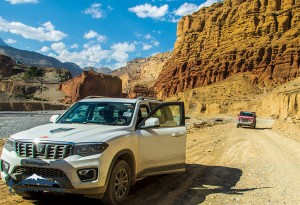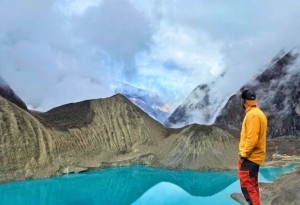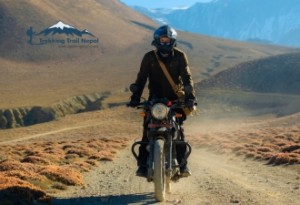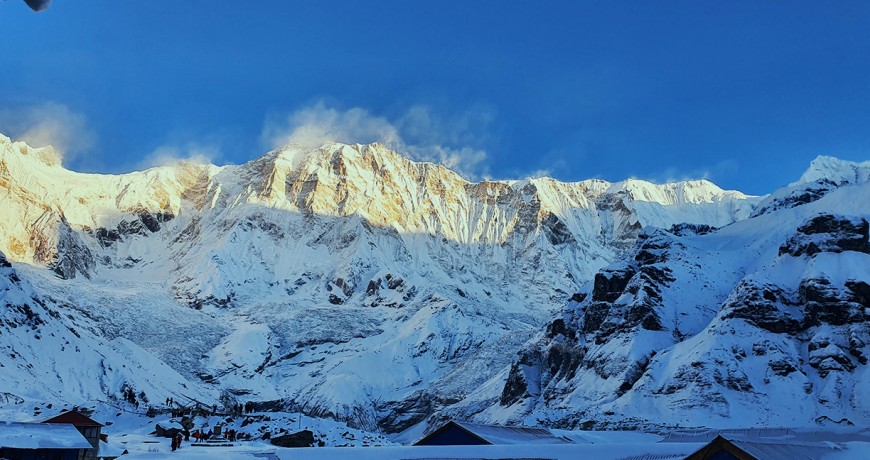Is Annapurna harder than Kilimanjaro?
Introduction: Annapurna vs. Kilimanjaro
When it comes to mountaineering, Annapurna and Kilimanjaro represent two vastly different challenges. Located in the Himalayas, Annapurna is renowned for its breathtaking beauty and notorious danger. On the other hand, Kilimanjaro, the highest peak in Africa, offers an easier, albeit still strenuous, adventure. Understanding the complexities and difficulties of these mountains can help adventurers determine which peak aligns better with their skills and expectations.
Annapurna is part of the Himalayas in north-central Nepal and is known for its highly technical routes and unpredictable weather. With a summit that reaches 8,091 meters (26,545 feet), it’s one of the world’s 14 highest peaks. The mountain is infamous for its high mortality rate, making it a daunting challenge even for seasoned climbers. Treacherous avalanches, relentless snowfall, and extreme altitudes make Annapurna one of the most perilous climbs in mountaineering history.
Check The Most Popular Short Annapurna Base Camp Trekking: 5 Days

Kilimanjaro, standing at 5,895 meters (19,341 feet), is less of a technical climb and more of a lengthy hike. Located in Tanzania, it offers a unique combination of various climatic zones—from dense rainforest to arctic conditions at its peak. Although it's less dangerous compared to Annapurna, the climb still demands significant physical fitness and acclimatization. Altitude sickness is a common issue, but with less risk for avalanches or severe weather conditions, Kilimanjaro remains accessible to trekkers with a reasonable level of fitness.
In this article, we'll dive deeper into what makes Annapurna and Kilimanjaro unique. We'll break down their respective challenges and identify the key factors that contribute to the difficulty level of each mountain, ultimately helping you decide which is the true ultimate challenge.
Overview of Annapurna and Its Challenges
The Annapurna massif in the Himalayas is one of the most daunting and treacherous mountain ranges in the world. Unlike popular trekking peaks, Annapurna’s multiple summits, including the highest at 8,091 meters (26,545 feet), present formidable challenges. Climbers tackling Annapurna must be prepared for extreme altitude, unpredictable weather conditions, and technical climbing demands.
One of the primary difficulties of Annapurna is its notorious avalanches. With steep faces and massive snow accumulation, the risk of avalanches remains high, claiming several lives each year. The mountain’s complex terrain also contributes to its difficulty. Climbers must navigate through icefalls, crevasses, and precarious ridges, often requiring advanced mountaineering skills.
Furthermore, the remoteness of Annapurna adds to the challenge. The starting point for most expeditions is far from any significant medical facilities, making rescue operations incredibly difficult. This isolation means climbers must be self-sufficient, carrying all necessary supplies and equipment for the duration of their journey.
The weather on Annapurna is another unpredictable factor. Sudden storms and high winds can dramatically alter climbing conditions, increasing the risk of frostbite, hypothermia, and other altitude-related illnesses. The seasonal window for attempting a summit is also very narrow, usually confined to pre-monsoon and post-monsoon periods when weather conditions are least hostile.

In summary, Annapurna's challenges are multifaceted—extreme altitude, technical climbing requirements, high avalanche risk, and its remote location all contribute to making Annapurna one of the hardest and deadliest mountains in the world to climb.
Overview of Kilimanjaro and Its Challenges
Mount Kilimanjaro, standing at 19,341 feet (5,895 meters), is the highest peak in Africa and one of the most iconic mountains in the world. While it lacks the technical climbing challenges of other peaks like Annapurna, Kilimanjaro poses its own set of difficulties that shouldn't be underestimated.
One of the most significant challenges climbers face on Kilimanjaro is altitude. As trekkers ascend through diverse climates, ranging from tropical rainforests to arctic conditions at the summit, they must acclimate to the thinning air. Altitude sickness is a common issue given the rapid elevation gain, and it can affect both novice and experienced climbers alike. Adequate acclimatization strategies and a slow, steady pace are crucial to mitigate this risk.
Another challenge is the varied trekking conditions. Climbers traverse several distinct ecological zones, each presenting unique obstacles. The lower slopes can be muddy and slippery, while the alpine desert can be extremely cold and windy, requiring proper gear and preparation. The summit attempt, beginning from the high camp in the middle of the night, is particularly grueling. Here, climbers face freezing temperatures and fatigue from the continuous ascent on loose scree.
Despite these challenges, Kilimanjaro remains a popular destination due to its non-technical routes, making it accessible to climbers with a reasonable level of fitness and determination. Successful summits are largely determined by mindset, preparation, and guidance from experienced local guides who understand the terrain and necessary pacing.
In essence, while Kilimanjaro may not compare to the technical demands of Annapurna, its challenges are substantial, requiring proper preparation and respect for the mountain’s unique conditions.
Key Factors That Make Annapurna Harder
Annapurna is considered one of the most challenging and dangerous peaks in the world, and several factors contribute to its difficulty.
Firstly, Annapurna's unpredictable weather is a significant challenge. The mountain can experience sudden snowstorms, avalanches, and high winds, all of which pose severe threats to climbers. Unlike Kilimanjaro, where weather patterns are somewhat predictable, Annapurna's climate can change rapidly, making it difficult to plan safe ascents.
Secondly, the technical difficulty of Annapurna is much higher. Climbing Annapurna requires advanced mountaineering skills, including ice-climbing and crevasse navigation. The mountain's steep, icy slopes and sheer cliffs are treacherous and demand a high level of expertise. On the other hand, Kilimanjaro is more of a long, strenuous hike without requiring technical climbing skills.
Thirdly, the risk of avalanches on Annapurna is notably high. The mountain’s topography makes it particularly susceptible to avalanches, which have claimed many lives over the years. In contrast, Kilimanjaro has little risk of such natural disasters.
Lastly, altitude sickness is more severe and common on Annapurna due to its higher elevation and the rapid ascent required. Climbers have less time to acclimatize compared to Kilimanjaro, making it a severe health risk that needs careful management.
In summary, Annapurna is harder than Kilimanjaro due to its unpredictable weather, technical difficulty, high avalanche risk, and severe altitude sickness challenges. These factors combined make it one of the most daunting peaks for climbers worldwide.
Check The Most Popular Kilimanjaro Trek Package
Key Factors That Make Kilimanjaro Harder
While Kilimanjaro is often considered more accessible than Annapurna, it presents its own set of formidable challenges that shouldn't be underestimated. One of the most significant factors is the altitude. Known as the "Roof of Africa," Kilimanjaro's Uhuru Peak stands at 5,895 meters (19,341 feet) above sea level. The rapid ascent compared to multi-stage climbs like Annapurna means trekkers face a higher risk of acute mountain sickness (AMS).
Another challenge lies in the diverse climatic zones. Climbers start in tropical rainforest conditions, passing through moorland and alpine desert before finally reaching the arctic summit zone. This drastic change in environments demands a high level of adaptability and preparation. Proper gear for both hot and freezing temperatures is essential, making packing more complex.
Moreover, the physical demand should not be underestimated. The trek involves long days of hiking, often 6-8 hours, with the summit day being particularly grueling. Climbers must ascend through the night in freezing conditions, dealing with diminishing oxygen levels. This combination of physical strain and harsh conditions tests both mental resilience and physical endurance.
Kilimanjaro also requires sound logistical planning. Understanding the best seasons for climbing, hiring reliable guides, and managing permits and regulations are crucial for a successful ascent. Unlike some high-altitude treks that might have permanent camps, Kilimanjaro largely offers a raw, up-close experience with nature, where preparation is key to survival.
In summary, while Kilimanjaro might be marketed as a "walkable" mountain, it brings a unique mix of altitude challenges, diverse climates, and physical demands that make it a hard and rewarding climb in its own right.

Conclusion: Which is the Ultimate Challenge?
Deciding between Annapurna and Kilimanjaro as the ultimate challenge depends on a variety of factors, including your experience level, physical condition, and personal preferences.
Annapurna is renowned for its extreme difficulty and perilous conditions. With one of the highest fatality rates among the world's mountains, it poses significant risks such as unpredictable weather, avalanches, and technical climbing sections. The route to Annapurna’s summit demands advanced mountaineering skills, robust acclimatization processes, and a high degree of mental resilience. It’s not just a physical challenge but a test of one's technical proficiency and adaptability in extremely harsh environments.
Kilimanjaro, while still a formidable challenge, is more accessible for trekkers with varying levels of experience. The main difficulty here lies in the altitude and the rapid ascent, which can lead to altitude sickness. However, Kilimanjaro’s routes are less technical compared to Annapurna, making it achievable for well-prepared hikers. With guides readily available and established routes, the journey to the summit of Kilimanjaro is more about enduring the altitude and the long trek rather than navigating dangerous terrain.
In conclusion, if you’re seeking a technical, high-risk adventure that pushes the boundaries of advanced climbing skills, Annapurna is the clear choice. On the other hand, if you’re looking for a high-altitude trek that challenges your stamina but remains within the grasp of non-technical climbers, Kilimanjaro offers a substantial yet more manageable expedition. Both mountains provide unique and formidable challenges, but Annapurna holds the upper hand in terms of sheer difficulty and danger.
Enquire Us
Recent Post

Nepal Introduces New $50 Daily Permit for Upper Mustang
Tips and Update
India Tibet by Nepal Road: 15-Day Overland Trip with Wildloggers 12 Jeep Convoy
Uncategorized
North Annapurna Base Camp Trekking A Comprehensive Guide
Trekking In Nepal
Is Self Driving is Possible in Upper Mustang Nepal?
Upper Mustang Trekking
Related Blog(s)
- North Annapurna Base Camp Trekking A Comprehensive Guide
- Every Thing You Need to Know about Annapurna Base Camp Trekking
- 2-Day Treks Around Kathmandu: The Perfect Short Escape for Nature and Culture Lovers
- 10 Best Trail Route Itinerary for Mohare Danda Trekking
- Best 15 Hiking Trips in Kathmandu
- Mohare Danda Trek vs Mardi Himal Trekking
- 50 Tips For Everest Trek: It Is Not Difficult as You Think
- How Difficult is Everest Base Camp Trekking
- Fitness Guide for Everest Base Camp Trek: Tips to Stay Fit, Healthy on EBC Trek
- Everest High Pass Trek Vs. Annapurna Circuit Trek - 10 Differences
- How Many Trekking Routes are in Nepal
- Manaslu Trekking Question Answers 2025 Cost Best Months Tips
- Karbakeli Eco Trek - New Trekking Trail in Annapurna
- How long is ABC Trek? Shortest Route, Driving, Trekking Distance 2025
- 8 Popular Trekking Areas in Nepal 2025
- Mount Everest Trek
- 10 Best Everest Base Camp Trek Itinerary - 2025
- Everest Base Camp Trek After COVID-19 - 2025
- Corona Virus Change Nepal Trekking
- Now You Can Skip Lukla Airport for Everest Base Camp TreK
- Adventure Trekking in Nepal - Top 5 Difficult Trekking Trails in Nepal
- Mohare Trekking Highlights | Eco Community | Short Hike | Itinerary
- 5 Best Himalayan Trekking Trails in Nepal
- Pikey Peak Trek - The Best Trekking in Lower Everest
- Mountain from Annapurna Circuit Trek in Nepal
- Know Before Annapurna Base Camp Trek
- Things to Know About Annapurna Circuit Trek
- Everest Base Camp Trekking Question
- Best 5 Days Short Trekking in Nepal
- Ama Dablma Base Camp Trek is a New Everest Trekking
- Why Everest Base Camp Trek the best Trek in Nepal?
- 6 Best Luxury Lodge Treks in Nepal
- Know Before Trekking in the Himalayas | Trekking in Nepal
- This is why Short Treks in Nepal are Amazing Adventures
- 5 Beautiful Base Camp Treks in Nepal
- 5 Things to avoid on Everest Base Camp Trek
- Best Nepal Trekking in December
- Tips About Trek In Nepal | Best Time Popular Trek Fitness Packing Altitude Sickness
- Why to choose Everest Base Camp Yoga Trek
- 5 Best Short Treks in Nepal
- Nepal Trekking Entry Fees and Permit Fees
- Best Monsoon Trekking in Nepal
- Mohare Hill is Second Poon Hill
- 5 Best Lake Trekking in Nepal
- Best Trekking Trails of Everest Region
- Group Joining Nepal Trekking for 2025
- The Best Short Treks from Pokhara
- Mohare Danda Trek: Best Short Trek from Pokhara

